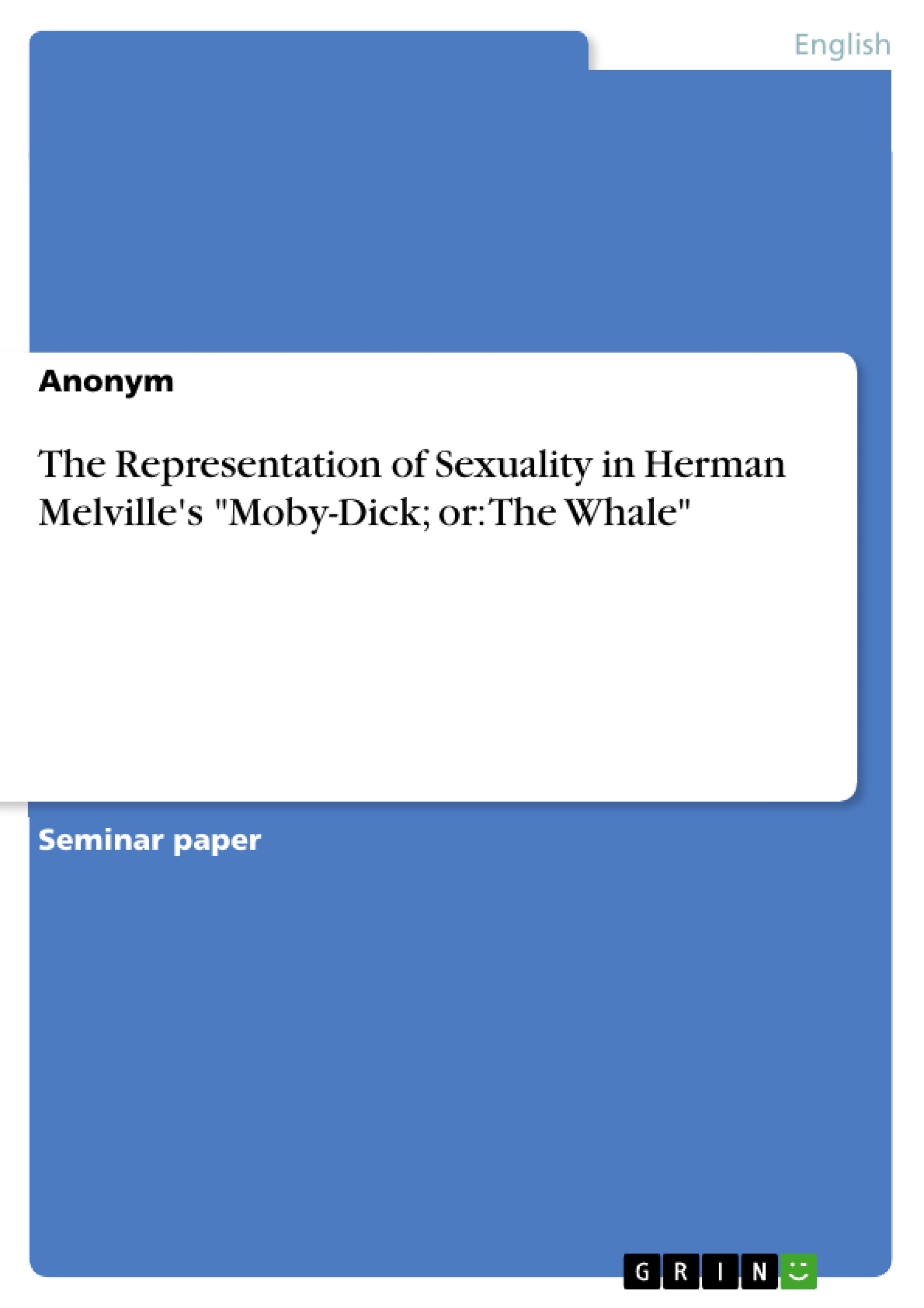The thesis is about how sexuality is represented in Melville's "Moby-Dick", which is not explicitly stated but rather through sexual puns and imagery. It explains the underlying concept of gender and sexuality that Melville uses in his novel and why he chose these methods to include sexuality in his work.
Table of Contents
- Introduction
- A short statement about sexuality and the role of women in Moby-Dick
- The appearance of sexuality in Moby-Dick
- Phallic jokes and sexual imagery
- The marriage of Ishmael and Queequeg
- The purpose of sexual references as criticism of Western society
- Conclusion
- Bibliographical references
Objectives and Key Themes
This paper explores the representation of sexuality in Herman Melville's Moby-Dick; or, The Whale, focusing on the absence of explicit sexual acts and the presence of veiled references. It examines how Melville utilizes sexual imagery and puns to critique Western society and its norms.
- The role of sexuality in a male-dominated narrative
- The use of phallic jokes and symbols in the text
- The ambiguous meaning of sperm and its relation to the narrative
- The relationship between Ishmael and Queequeg as a representation of homosexuality
- Melville's critique of Western society through sexual innuendos
Chapter Summaries
- Introduction: Introduces the paper's focus on the representation of sexuality in Moby-Dick, highlighting the absence of explicit sexual acts and the presence of veiled references.
- A short statement about sexuality and the role of women in Moby-Dick: Discusses the limited role of women in the narrative and the prevalence of male bonds, suggesting the dominance of homosexual tendencies in the novel.
- The appearance of sexuality in Moby-Dick: Explores the different ways sexuality is represented in the novel, focusing on phallic jokes and symbols, and the relationship between Ishmael and Queequeg.
- Phallic jokes and sexual imagery: Analyzes the use of phallic puns and symbols, such as the ambiguous meaning of sperm, the scene with Queequeg in bed, and the story of the lawyer in the case of adultery.
- The marriage of Ishmael and Queequeg: Discusses the relationship between Ishmael and Queequeg as a representation of homosexuality, and its significance in the novel.
Keywords
This paper delves into the representation of sexuality in Moby-Dick, focusing on the use of phallic jokes and symbols, the ambiguous meaning of sperm, the relationship between Ishmael and Queequeg, and Melville's criticism of Western society through sexual innuendos. Key themes include homosexuality, homosociality, phallic imagery, and social critique.
- Quote paper
- Anonym (Author), 2015, The Representation of Sexuality in Herman Melville's "Moby-Dick; or: The Whale", Munich, GRIN Verlag, https://www.grin.com/document/468277



